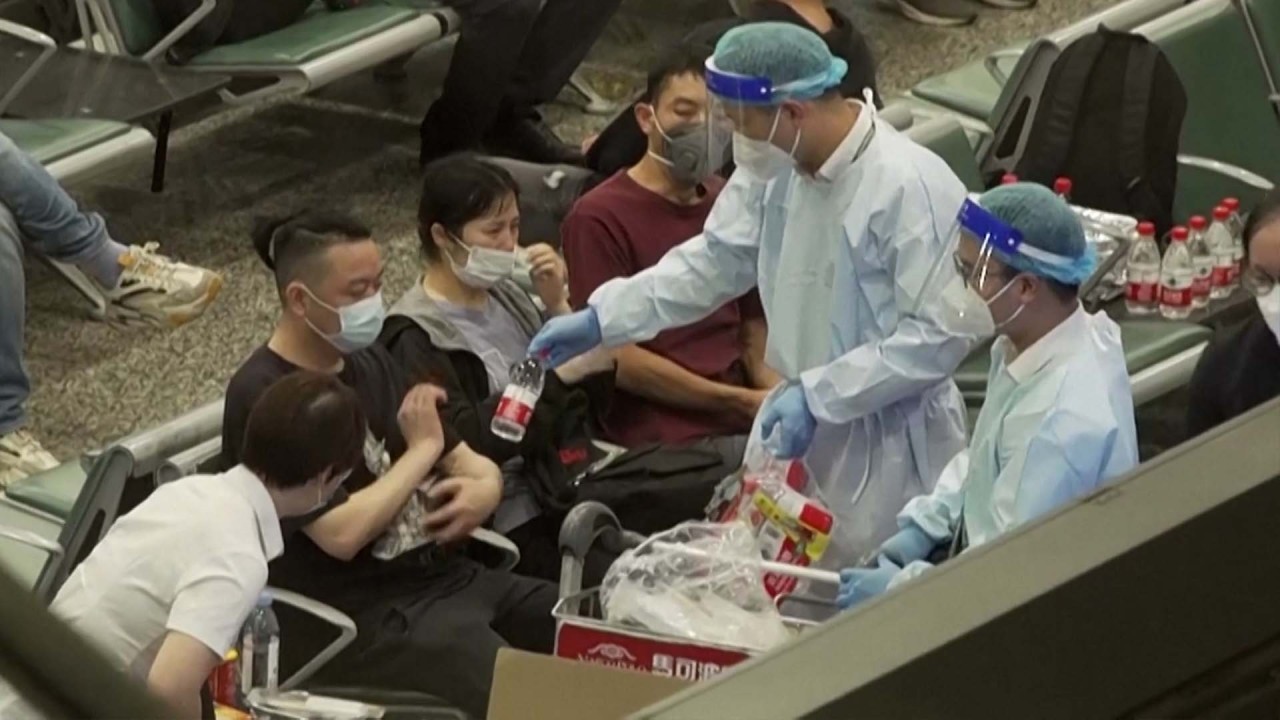
China Eastern flight MU5735: suspected debris found 10km from crash site, search area widened
- Long metal strip found by farmer in paddy field so far away sparks questions about possible mid-air break-up
- Search area to be expanded in hilly and forested crash site, where constant rain and landslide fears are making recovery efforts more difficult
Huang Jianyi said he found the piece of metal as he was weeding his paddy fields in the village of Siwang on Tuesday, a day after the Boeing 737-800 carrying 132 people crashed into a hillside in the Guangxi Zhuang autonomous region.
“I saw a piece of metal. It was white,” said Huang, who is about 80 and lives alone.
He held his arms wide and raised his palm to explain its dimensions to reporters walking with him on Thursday night.
Zheng Xi, head of the Guangxi regional fire and rescue office, said the piece of suspected wreckage was about 1.3 metres long and 10cm wide (4.3ft by 4 inches).
It was found 10km away and the search area was expected to be expanded by half, he told a press conference in Wuzhou, near the crash site. The area spanned more than two hectares (five acres) before.
The discovery of the suspected debris so far from the crash site has raised questions over whether the plane disintegrated or parts of it exploded mid-air.
Meanwhile, military personnel taking part in the search had scoured more than 5.8 hectares and recovered 1,800 pieces of debris by Thursday night, state broadcaster CCTV reported.

The Yatang area in Siwang village, where Huang found the elongated piece of white metal, sits on a hill and is mapped inaccurately by some Chinese navigation mobile apps. It is more than 50km or an hour’s drive from downtown Wuzhou.
Police and local officials collected the suspected debris after Huang’s nephew, 40-year-old Chen Zhuchang, reported it on Thursday morning.
“It was a long white strip that bends when picked up, it had a slight curve, and it wasn’t heavy – about one or two catties,” said Chen, using the traditional Chinese unit for mass, meaning that the strip weighed about 0.5 to 1kg (about 1 or 2lbs).
He said the piece was 1cm thick and had a few dozen hexagonal screws or rivets on it.
“There was a small area of blue paint at the centre of the strip,” he added. “When I saw this, my first thought was that it could be aircraft debris.”
Rescue officials are still referring to the find as “suspected debris” and did not directly respond to questions on Thursday about the way the Boeing 737-800 could have crashed.
“The current focus remains search and rescue while collecting evidence. After entering the investigation period, we will invite relevant parties to take part,” Zhu Tao, aviation safety director at the Civil Aviation Administration of China, said in Wuzhou on Thursday.
MU5375 crash sparks Beijing safety-checks call for all high-risk sectors
The aircraft could have shed the piece of debris as it went down, said Jeff Guzzetti, former head of accident investigation at the US Federal Aviation Administration.
“The questions are: exactly what piece was it and when did it come off?” Guzzetti told Bloomberg.
Huang Jun, a professor at the Beihang University in Beijing, told Chinese outlet Jimu News that it was too early to confirm whether the plane disintegrated in mid-air just from how the pieces of debris were spread out.
That was the view also of Chrystal Zhang, associate professor of aviation at Australia’s RMIT University, who said that more analysis and evidence, such as information from the flight data recorder, were needed to answer the question.
Most reports published after an investigation point to more than one contributing factor for the accident, Zhang said.

Regardless of how complex the search and rescue operation becomes, international law requires China to submit a preliminary report within 30 days of the crash to the International Civil Aviation Organization, a UN autonomous agency, she pointed out. This requirement was confirmed by Chinese officials on Friday.
However, China is free to choose not to release the report to the public.
Farmer Huang’s nephew Chen said he might have heard the plane go down. The village of Siwang sits below an air route and near the Wuzhou Xijiang Airport, which serves training and domestic commercial flights. But Chen knew the bang he heard on Monday did not involve a trainer aircraft.
“When it happened, I heard a loud sound and thought a war had broken out,” he said. “It was like the sound of shells in the movies. It was especially loud and wasn’t the same as the sound of thunder. It lasted for more than 10 seconds.”




